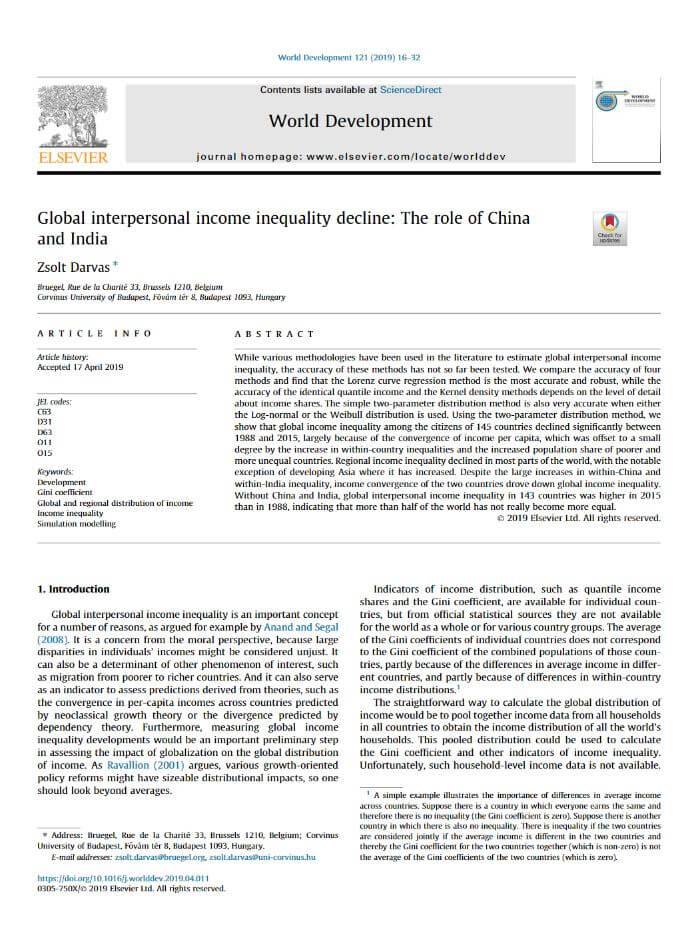Global interpersonal income inequality decline: The role of China and India
Without China and India, global interpersonal income inequality in 143 countries was higher in 2015 than in 1988. Has the rest of the world really bec
While various methodologies have been used in the literature to estimate global interpersonal income inequality, the accuracy of these methods has not so far been tested. We compare the accuracy of four methods and find that the Lorenz curve regression method is the most accurate and robust, while the accuracy of the identical quantile income and the Kernel density methods depends on the level of detail about income shares.
The simple two-parameter distribution method is also very accurate when either the Log-normal or the Weibull distribution is used. Using the two-parameter distribution method, we show that global income inequality among the citizens of 145 countries declined significantly between 1988 and 2015, largely because of the convergence of income per capita, which was offset to a small degree by the increase in within-country inequalities and the increased population share of poorer and more unequal countries. Regional income inequality declined in most parts of the world, with the notable exception of developing Asia where it has increased. Despite the large increases in within-China and within-India inequality, income convergence of the two countries drove down global income inequality. Without China and India, global interpersonal income inequality in 143 countries was higher in 2015 than in 1988, indicating that more than half of the world has not really become more equal.




